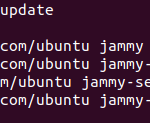The days in which a business could thrive by serving customers through brick-and-mortar stores alone are long gone. Almost all retailers now offer a variety of online and offline channels, often with some degree of integration to ensure a smooth customer journey across different touchpoints. However, even these multichannel and cross-channel strategies are increasingly falling short of modern expectations.
Today’s consumers expect to be able to interact with retailers wherever and whenever they choose. They expect to be able to use multiple channels simultaneously – for instance, using a mobile app while shopping in a physical location – and they expect a fully connected, consistent, and frictionless experience regardless of how they shop.
In other words, there is a rapidly growing appetite for omnichannel retail.
Omnichannel adoption can lead to significant customer experience improvement and revenue growth, but implementing an omnichannel strategy is a highly complex undertaking. Cost-effective and efficient omnichannel operations are heavily AI-driven and rely on a combination of enterprise-owned and third-party solutions. What’s more, it is essential to achieve uniformity, portability, and supportability across the entire omnichannel ecosystem.
For retailers considering a transition to omnichannel, here are four key success factors to keep in mind:
Stable and extensible infrastructure
Compute capability, in the form of hypervisors and operating systems is at the heart of every omnichannel implementation, and these core infrastructure components must be reliable. Retailers need to know that their solutions will be well supported not just today, but in the long-term, so it is important to choose technology vendors with a longstanding track record for stability and quality.
At the same time, these infrastructure solutions must be extensible. Omnichannel strategies depend on flexibility to continue meeting evolving customer expectations, which means that infrastructure needs to be able to seamlessly grow out and integrate with newly emerging technologies.
To cut operational complexity while maximising agility, it is best to utilise the same operating system and tooling across platforms. By deploying the same solutions at the edge, on-premises, and in the cloud, it becomes much easier to port workloads and manage the environment without duplicating effort.
Distributed AI
Artificial intelligence plays a central role in improving the customer experience through real-time analytics. Traditionally, this analysis would take place in the cloud, but as brick-and-mortar locations become more sophisticated, too much data is being collected at the store level for it to be practical to transmit up to a data lake for processing. To achieve timely insights, business intelligence needs to happen at the edge.
Distributed AI enables retailers to leverage data insights in real-time regardless of the medium of customer interaction. This is made possible by deploying infrastructure capable of handling AI-level and GPU-enabled applications both in the cloud and all the way to the edge. Keeping this technology consistent will help ensure that the same processes can be run across all the different layers of the omnichannel environment.
Control costs with supported open source
Utilising open source technology is an excellent way to reduce costs and gain access to leading-edge functionality. Open-source applications are often highly robust, but keeping them secure and up-to-date can be challenging if they lack dedicated support.
For omnichannel retailers, even a brief interruption to mission-critical applications can lead to immense revenue loss. Businesses can minimise this risk by choosing a technology partner that offers enterprise-grade support for open source applications, with ongoing maintenance and security patching as well as 24/7 troubleshooting.
Remote operations support
If an outage does occur, retailers need to be able to heal systems and bring them back into operation ASAP. From both a cost and time perspective, sending out engineers to perform on-site maintenance is wildly impractical, so remote management capabilities are crucial.
Whether a retailer experiences an app, processor level, disc, full compute, or power outage, effective tooling will enable it to remotely take systems from bare metal all the way back to fully operational. Alongside recovery, remote management solutions should also include monitoring and alarms to flag issues and highlight potential problems preemptively.
Canonical’s omnichannel enablement platform addresses each of these factors, providing all of the key components that retailers need to successfully modernise their operations. The platform is designed to excel across the full scope of omnichannel retail, and it is fully modular, so customers can choose precisely the solutions they need. To learn more, contact us today.
Discover more from Ubuntu-Server.com
Subscribe to get the latest posts sent to your email.




